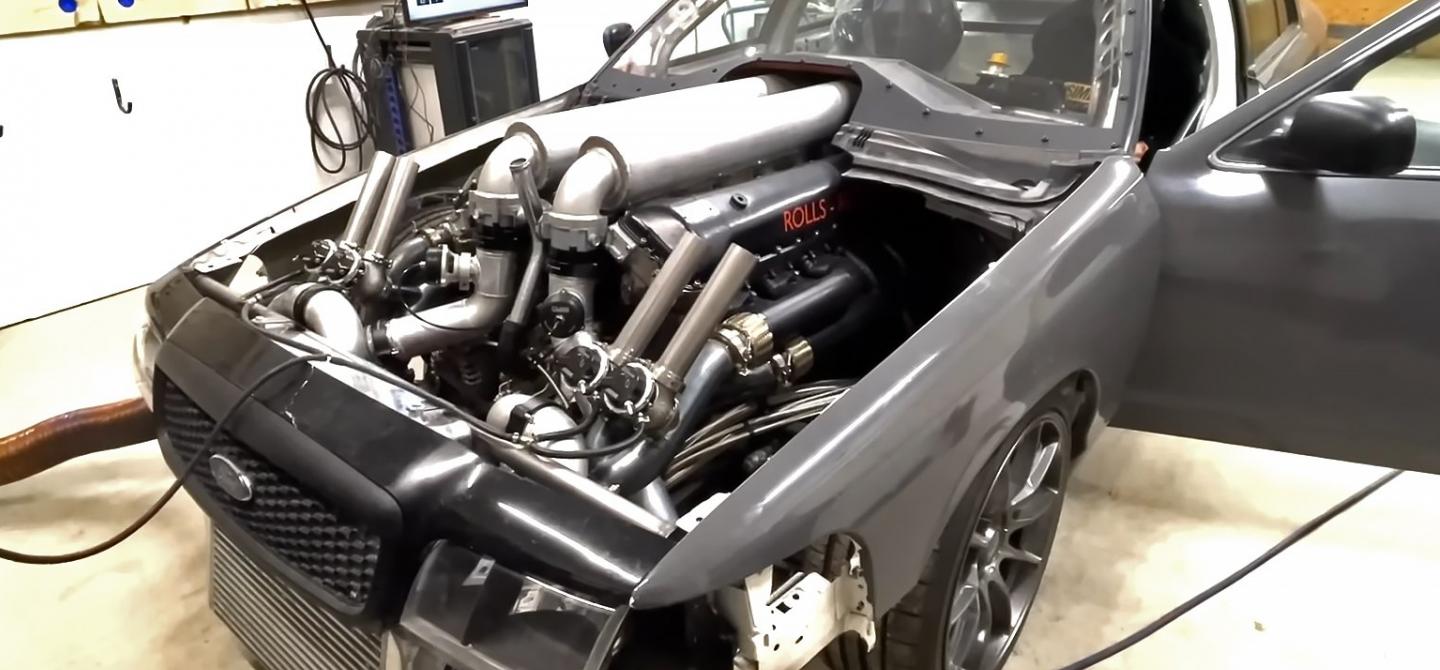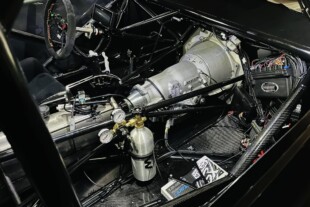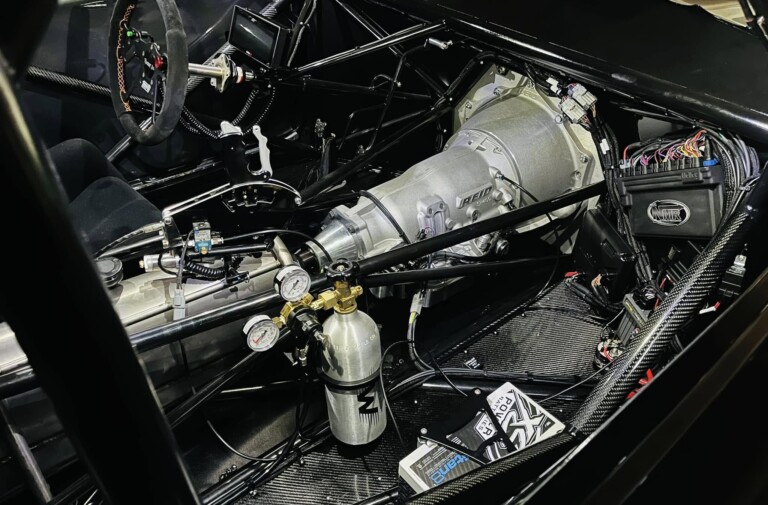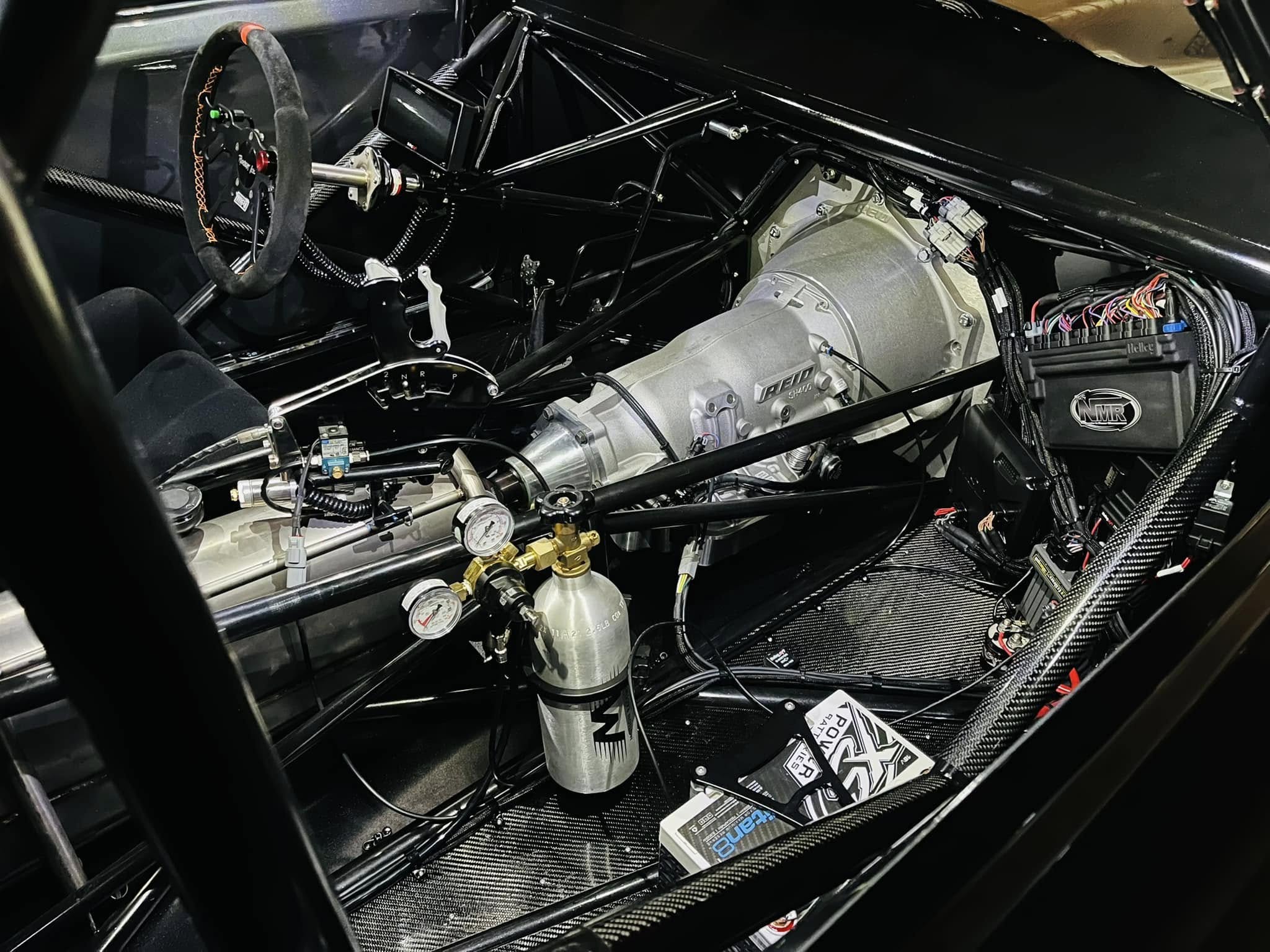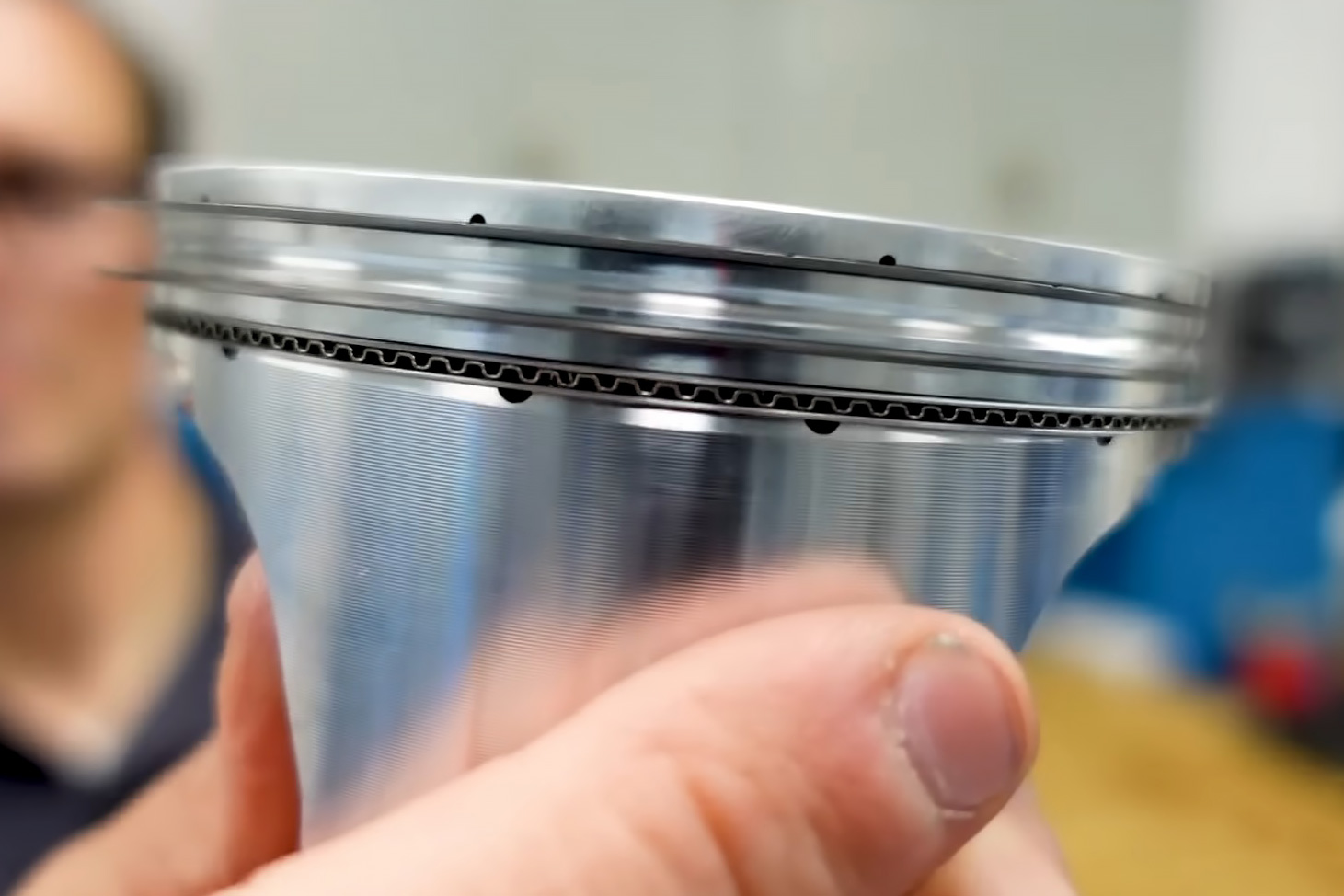Over the past few years, we’ve peripherally followed a group of enthusiasts from Sweeden who had the wild idea to get a Rolls-Royce V12 Meteor tank engine running and then fit it into a Ford Crown Victoria chassis. While embodying the hot-rodder spirit to the max, we’ve always been more interested in the powerplant itself. And now, we get to see it make all of its power.
We have discussed the Meteor engine previously, but in case you happen to be unfamiliar, the Meteor engine is a derivative design of the infamous Rolls-Royce Merlin V12 engine that most notably powered the P-51 Mustang fighter plane (along with the Hawker Hurricane and Supermarine Spitfire). The Meteor shares the Merlin engine’s bore and stroke — 5.400-inches by 6.00 inches — for a total displacement of 1,649 cubic inches, or 27.02 liters for the metrically inclined among us.
While the Merlin engine’s supercharged horsepower output was rated in the four digits, the naturally aspirated land-based version was rated between 550 and 650 horsepower throughout its production cycle, with a torque output of 1,450 lb-ft. These numbers were achieved in the 1940s through the 1960s, so while slightly outdated technologically, they give the Interceptor team a baseline to aim for. Well, they would if they had kept the engine naturally aspirated.
The Meteor Interceptor team has brought the engine a long, long way from the initial startup. Originally a 600-horsepower N/A workhorse, the team is hoping for 2,500 horsepower from their reimagined Goliath.
Since no one as insane as these Swedes (said with much love and respect) would be happy with 600 horsepower, they decided to plumb in a pair of modern turbochargers into the system to amplify the incredible amount of air already flowing through the near-1,650-cube mill at standard atmospheric pressure. With a goal of 2,500 horsepower and an array of modern components and electronics at their disposal, the team modernized the engine design with an array of parts.
Those modern upgrades include an upgraded dry-sump oiling system, a modern electronic fuel injection system that replaced the old magnetos with a modern crank-trigger electronic ignition, and, of course, a pair of turbos, a pair of air-to-air intercoolers, a quartet of wastegates, and a pair of blow-off valves. The factory intake manifold was ditched in favor of a dual-plenum design fabricated out of round-tube, designed to handle the goal of 29 psi of boost, and of course, the turbo manifolds are fabricated log-style units, with the turbochargers dumping in front of the front tire, and the wastegates exiting the hood.

Here you can see the engine in its final form. Note the dual-plenum intake manifold with dual blow-off valves, and the quad-wastegates. Not-so-visible are the big Borg Warner S500SX turbochargers. Controlling boost with that much displacement is obviously a challenge with modern components designed for much smaller volumes of gasses.
Several years of hard work lead up to the team’s latest video, in which the systems have all been tested and confirmed to be working together, and now the moment of truth: putting the Meteor Interceptor onto a hub dyno. While we would have loved to see the engine be tested on an engine dyno, hooking the whole thing up to a wheel-hub dyno makes an incredible amount of sense.
After some quick rewiring to get a wheel-speed signal from the TH400 transmission (yes, this tank engine is mated to a three-speed automatic), the team makes several soft pulls to near 3,000 rpm. Not quite the ultimate goal of 3,500 rpm, but a start. For comparison, in its original tank application, the engine was limited to 2,000 rpm. It’s only fitting that the first hard pull was to 2,000 rpm and netted a scant 420.5 horsepower.
The following (one of many) “short breaks because of all of the heat” gave the team a chance to pore over the data and work on the tuneup. Fortunately for them, there was plenty of natural cooling available outside, thanks to the outside ambient temperature. However, subsequent power pulls were stuck in the low-RPM range, regardless of what the team did.
The problem? “My dyno is too weak,” says the dyno operator. Apparently, the insane amount of torque the engine makes, at the wheel-speed they were testing at (referred to as “Autobahn speeds” in the video) makes for an untestable combination on this particular dyno. “If we run in third gear like we are now, the wheel speed is too high. If we test in second gear, there is just too much torque. We have to get a bigger dyno.”
While they might not have gotten the numbers they were looking for, what the team did get was solid data and the chance to sort out some minor issues during operation. Consolation prizes, maybe, but progress nonetheless. In the drag-racing world, for something of this caliber, it’s not uncommon for the dyno — hub or otherwise — to be the end-all, be-all tuning solution. Oftentimes, as we saw with our Red project, the dyno is simply a tool to ensure everything is happy, and the actual tuning at full-boogie takes place at the racetrack.
The Swedish team has come a long way, taking a WWII-surplus powerplant and turning it into a modern behemoth. However, they still have some progress to make on the way to their 2,500-horsepower, 200 mph goal. You can be sure we’ll continue to follow the team’s eccentric journey to make a tank engine do something it was never designed to do.
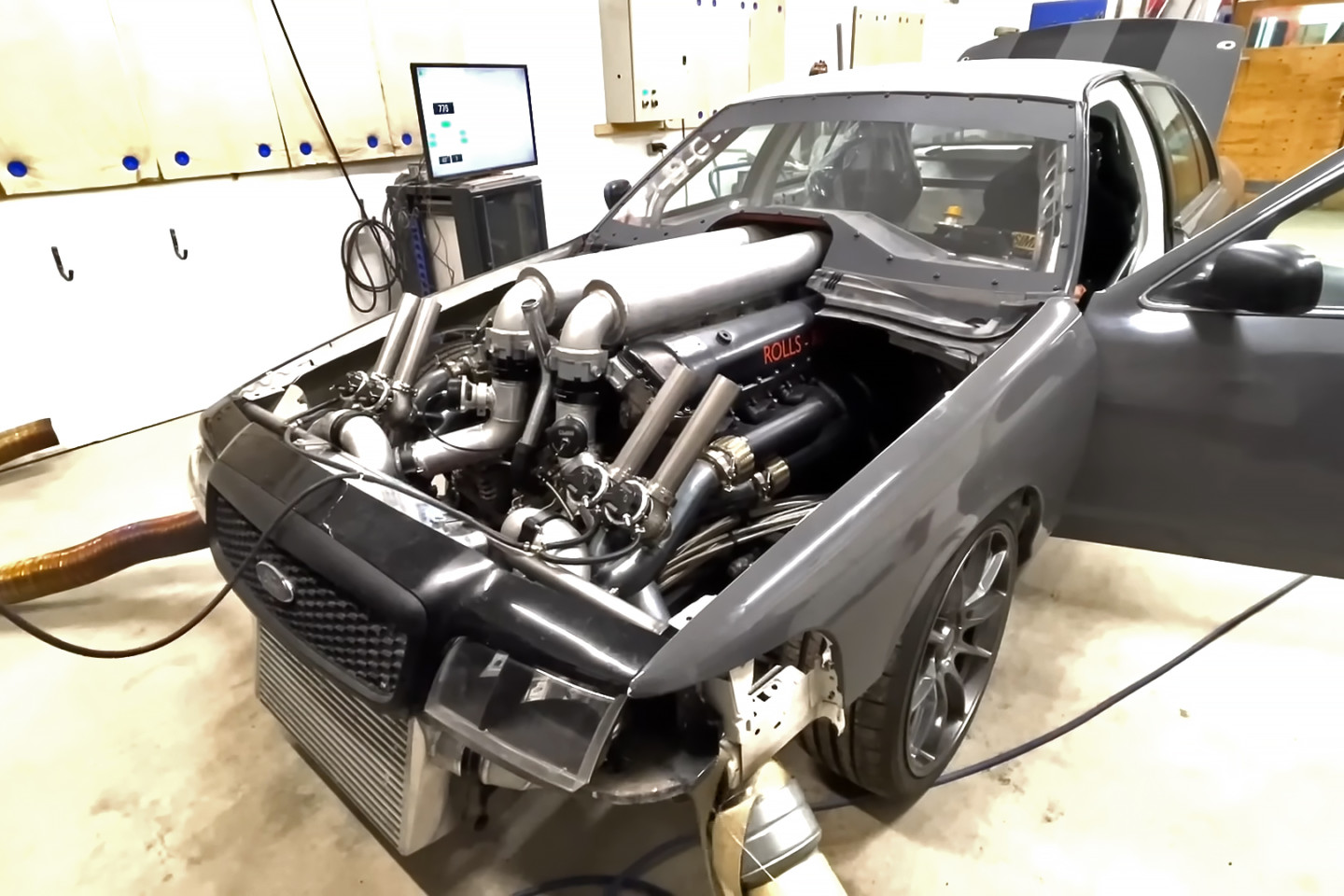
While the hub dyno was no match for the high-speed torque of the Meteor Interceptor’s turbo tank engine, the team did get some valuable testing in, which will benefit them as the journey continues.


